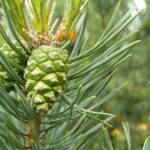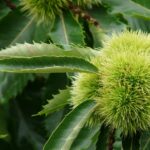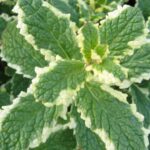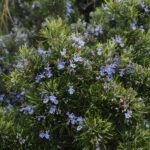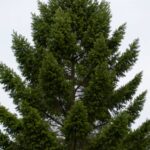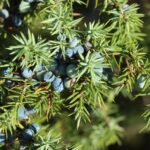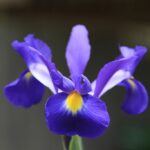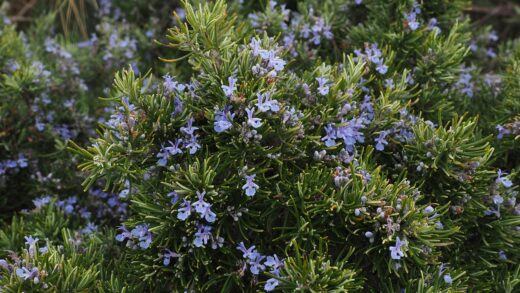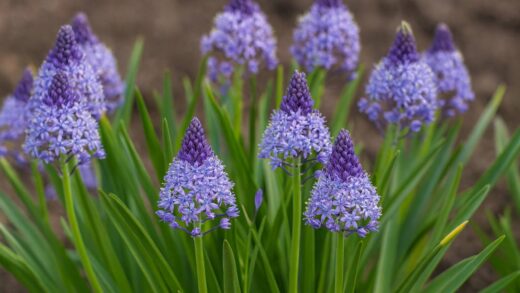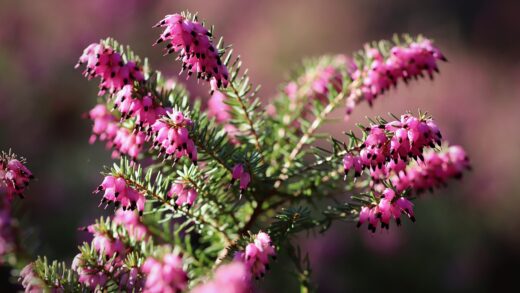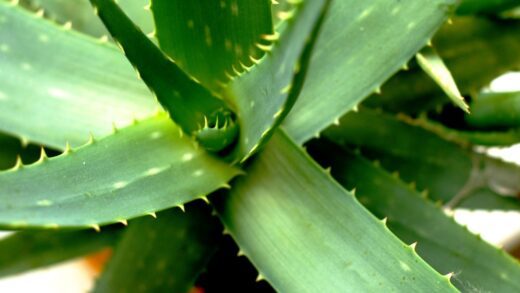The japanese lady fern, with its ethereal, silvery fronds touched with hues of green and burgundy, is a true gem in any shade garden, lending an air of delicate elegance and refined texture. Successfully cultivating this plant requires an understanding of its specific needs, which are deeply rooted in its native woodland habitat. It is not a particularly demanding fern, but providing the right conditions from the outset is the key to unlocking its full, breathtaking potential and ensuring its long-term health and vigor. Appreciating its preference for consistent moisture, dappled light, and rich, organic soil will allow it to thrive and become a standout feature, creating a lush, cool oasis in your garden’s shaded corners for many years to come.
Beyond its visual appeal, the health of this fern is contingent on replicating the forest floor environment where it naturally flourishes. This involves a careful balance of several environmental factors that work in concert to support its growth cycle. The plant is deciduous, meaning it will die back to the ground in winter, a natural part of its life cycle that should not be cause for alarm. Understanding these fundamental characteristics is the first step toward becoming a proficient grower of this exquisite fern variety. The true art of its care lies in the consistent application of these basic principles throughout the seasons.
A common misconception is that all ferns are interchangeable in their care requirements, but the japanese lady fern has distinct preferences that set it apart. While it shares a love for shade and moisture with many other fern species, its unique coloration is often more pronounced when it receives just the right amount of indirect, morning light. Furthermore, its rhizomatous root system behaves differently from the central crown-forming systems of some other common garden ferns, which has implications for planting, division, and overall maintenance. Ignoring these nuances can lead to a less vibrant, and ultimately less healthy, plant.
Ultimately, the reward for providing attentive care is a plant that offers multi-seasonal interest and unparalleled beauty. From the moment the new fronds, known as crosiers or fiddleheads, emerge in the spring with intense coloration, through the full, graceful flush of summer foliage, to the plant’s graceful decline in the autumn, it provides a dynamic display. By mastering its care, you not only cultivate a beautiful plant but also gain a deeper appreciation for the delicate interplay of light, water, and soil that sustains life in the woodland garden. It is a journey of observation and gentle intervention that brings immense satisfaction.
Optimal soil conditions for healthy growth
The foundation for a thriving japanese lady fern is, without question, the soil in which it is planted. This fern demands soil that is consistently moist yet well-draining, a combination that mimics the naturally loamy, humus-rich floor of a deciduous forest. Heavy clay soils that retain excessive water can quickly lead to root rot, a fatal condition for most ferns, while sandy soils that drain too quickly will fail to provide the sustained moisture the plant requires. Therefore, achieving the perfect soil structure is a critical preliminary step for successful cultivation.
More articles on this topic
To create the ideal growing medium, amending your native soil is almost always necessary. The goal is to create a substrate that is rich in organic matter, which serves the dual purpose of retaining moisture while also ensuring adequate aeration and drainage. Incorporating materials such as well-rotted compost, leaf mold, or aged pine bark fines will significantly improve the soil’s texture and nutrient content. These amendments help to create a crumbly, friable structure that allows the fern’s delicate rhizomes to spread easily and access the water and nutrients they need.
The pH of the soil is another crucial factor that directly impacts the fern’s ability to absorb nutrients. The japanese lady fern prefers a slightly acidic to neutral soil, with a pH range of approximately 5.5 to 6.8 being optimal. Before planting, it is highly advisable to test the soil’s pH to determine if any adjustments are needed. If the soil is too alkaline, incorporating acidic organic matter like peat moss or pine needles can help lower the pH over time, creating a more hospitable environment for the plant to establish itself and flourish.
Proper soil preparation before planting will pay dividends for the entire life of the fern. When preparing the planting hole, it should be dug wider than it is deep, allowing the roots to spread horizontally into the amended soil. It is also beneficial to apply a layer of organic mulch, such as shredded leaves or bark, around the base of the plant after planting. This mulch layer helps to conserve soil moisture, suppress weed growth, and regulate soil temperature, further emulating the protective layer of leaf litter found in its natural habitat.
The importance of atmospheric humidity
While proper soil moisture is vital for the japanese lady fern, the level of moisture in the surrounding air, or atmospheric humidity, is equally important for maintaining the lush, healthy appearance of its fronds. These ferns have evolved in shaded, humid woodlands where the air is consistently damp, and their delicate foliage is not adapted to dry, arid conditions. Low humidity can cause the edges of the fronds to turn brown and crispy, detracting from the plant’s ornamental value and indicating that the plant is under environmental stress.
More articles on this topic
In many garden settings, especially during hot, dry summer periods, ambient humidity levels may fall below what is ideal for the fern. There are several effective strategies to increase local humidity around the plants. Grouping several ferns and other shade-loving plants together creates a microclimate where the collective transpiration from the plants raises the humidity in the immediate vicinity. This technique of companion planting is not only aesthetically pleasing but also functionally beneficial for creating a more suitable environment.
The presence of a nearby water feature, such as a small pond, stream, or even a birdbath, can also significantly increase local humidity through evaporation. The gentle movement of water and the constantly moist surfaces contribute to a cooler, more humid microenvironment that closely mimics the conditions found near woodland streams where these ferns often thrive. If a water feature is not feasible, occasional misting of the foliage with a fine spray of water in the early morning can provide a temporary boost in humidity, though this is a more labor-intensive solution.
Choosing the right location in the garden can also passively manage humidity levels. Planting on the north or east side of a building, under the canopy of large trees, or in a naturally low-lying area where moisture tends to collect can provide a more humid and protected environment. These locations are shielded from the drying effects of intense afternoon sun and prevailing winds, helping to conserve both soil and atmospheric moisture and ensuring the japanese lady fern remains vibrant and healthy throughout the growing season.
Temperature tolerance and climate considerations
The japanese lady fern is a temperate climate plant, well-adapted to distinct seasonal changes. It is generally hardy in USDA zones 4 through 9, demonstrating a robust ability to withstand winter cold when it is dormant. However, its performance and health are significantly influenced by the temperature extremes it experiences during the growing season. The plant thrives in areas with mild to cool summers and will struggle in regions with prolonged periods of intense heat and high temperatures, which can lead to scorched fronds and overall plant stress.
During the active growing season in spring and summer, the fern prefers moderate temperatures, ideally ranging between 15°C and 24°C (60°F to 75°F). In climates where summer temperatures consistently exceed this range, providing a location with deep shade, especially during the hot afternoon hours, is absolutely critical. The cool, moist conditions of a full shade location help to mitigate the stress caused by excessive heat, allowing the plant to maintain its vigor and lush appearance. Proper mulching also plays a key role in keeping the root zone cool.
The fern’s deciduous nature is a key adaptation for surviving cold winters. As autumn approaches and temperatures drop, the fronds will naturally yellow and die back, and the plant enters a state of dormancy. The energy is stored in the underground rhizomes, which are protected from freezing temperatures by the soil and any overlying mulch or snow cover. This dormant period is essential for the plant’s life cycle, and gardeners should resist the urge to “clean up” the dead fronds until late winter or early spring, as they provide an extra layer of insulation for the crown.
It is important to consider the specific microclimate of your garden when selecting a planting site. A sheltered location can protect the fern from late spring frosts, which can damage the tender new fiddleheads as they emerge. Similarly, protection from strong, drying winds is beneficial in both summer and winter, as wind can rapidly desiccate the foliage and increase water loss. By understanding and respecting the fern’s temperature preferences and providing a suitable microclimate, you can ensure its successful cultivation even at the edges of its recommended hardiness range.
Container cultivation versus garden planting
Growing the japanese lady fern in a container offers a versatile alternative to planting it directly in the garden, particularly for those with limited space or unsuitable soil conditions. This method allows for precise control over the growing medium, ensuring the fern receives the ideal mix of moisture-retentive and well-draining components. Container cultivation also provides the flexibility to move the plant to different locations to optimize its exposure to light or to protect it from harsh weather conditions. It is an excellent way to feature the fern’s graceful form on a shaded patio, balcony, or porch.
When choosing a container, it is important to select one that provides adequate room for the rhizomes to spread but is not so large that the soil remains waterlogged. A pot that is wider than it is deep is often a good choice. Most critically, the container must have sufficient drainage holes at the bottom to prevent water from pooling around the roots, which is a primary cause of failure for container-grown ferns. Using a high-quality potting mix formulated for moisture-loving plants, amended with extra compost or perlite, will create the perfect environment.
The care requirements for a container-grown japanese lady fern are more intensive compared to its garden-planted counterparts. The limited volume of soil in a pot dries out much more quickly, necessitating more frequent and vigilant watering, especially during warm and windy weather. It is crucial to check the soil moisture daily and water thoroughly whenever the top inch of soil feels dry to the touch. Additionally, nutrients are leached from the soil with each watering, so a regular feeding schedule with a diluted, balanced liquid fertilizer during the growing season is essential to maintain plant vigor.
Another significant advantage of container gardening is the ability to easily manage overwintering in colder climates, particularly in areas at the lower end of its hardiness range (zone 4 or 5). The pot can be moved to a sheltered, unheated location such as a garage, shed, or cold frame for the winter. This protects the rhizomes from the freeze-thaw cycles that can be damaging in an exposed container. While the plant will still go dormant, this added protection ensures its survival and a robust return in the spring.
Long-term maintenance and rejuvenation
Ensuring the long-term health and beauty of a japanese lady fern involves more than just initial planting and basic care; it requires some ongoing maintenance to keep the clump vigorous and attractive. One of the most important long-term tasks is periodic division of the plant. Over several years, the central part of the fern clump can become woody and less productive, resulting in a sparse, open center. This is a natural aging process that can be easily remedied by dividing the plant.
Division is best performed in the early spring, just as the new fiddleheads are beginning to emerge, or in the autumn after the fronds have died back. The process involves carefully lifting the entire root ball from the ground and using a sharp spade or garden knife to separate the rhizome into smaller sections. Each section should have several healthy growing points (buds or small fiddleheads) and a good portion of the root system. Replanting these divisions immediately will result in multiple new plants, effectively rejuvenating your stock and allowing you to propagate this beautiful fern throughout your garden.
Aside from division, general tidiness helps maintain the plant’s aesthetic appeal and health. Throughout the growing season, any fronds that become damaged, broken, or diseased should be promptly removed by cutting them back to the base. This not only improves the plant’s appearance but also helps to prevent the potential spread of fungal diseases. At the end of the season, after the first hard frost has killed the foliage, the dead fronds can be cut back to the ground to keep the garden bed neat, although leaving them in place until late winter can offer additional protection to the crown.
Finally, long-term soil health is paramount. Each year, you should replenish the organic matter around the base of the fern by applying a fresh layer of mulch, such as compost or shredded leaves, in the spring. This annual top-dressing mimics the natural decomposition of leaf litter in a forest, continually enriching the soil, improving its structure, and providing a slow release of essential nutrients. This simple yearly task ensures the soil remains fertile and moist, supporting the fern’s health and vitality for many seasons to come.
Fotó forrása: David J. Stang, CC BY-SA 4.0, via Wikimedia Commons







